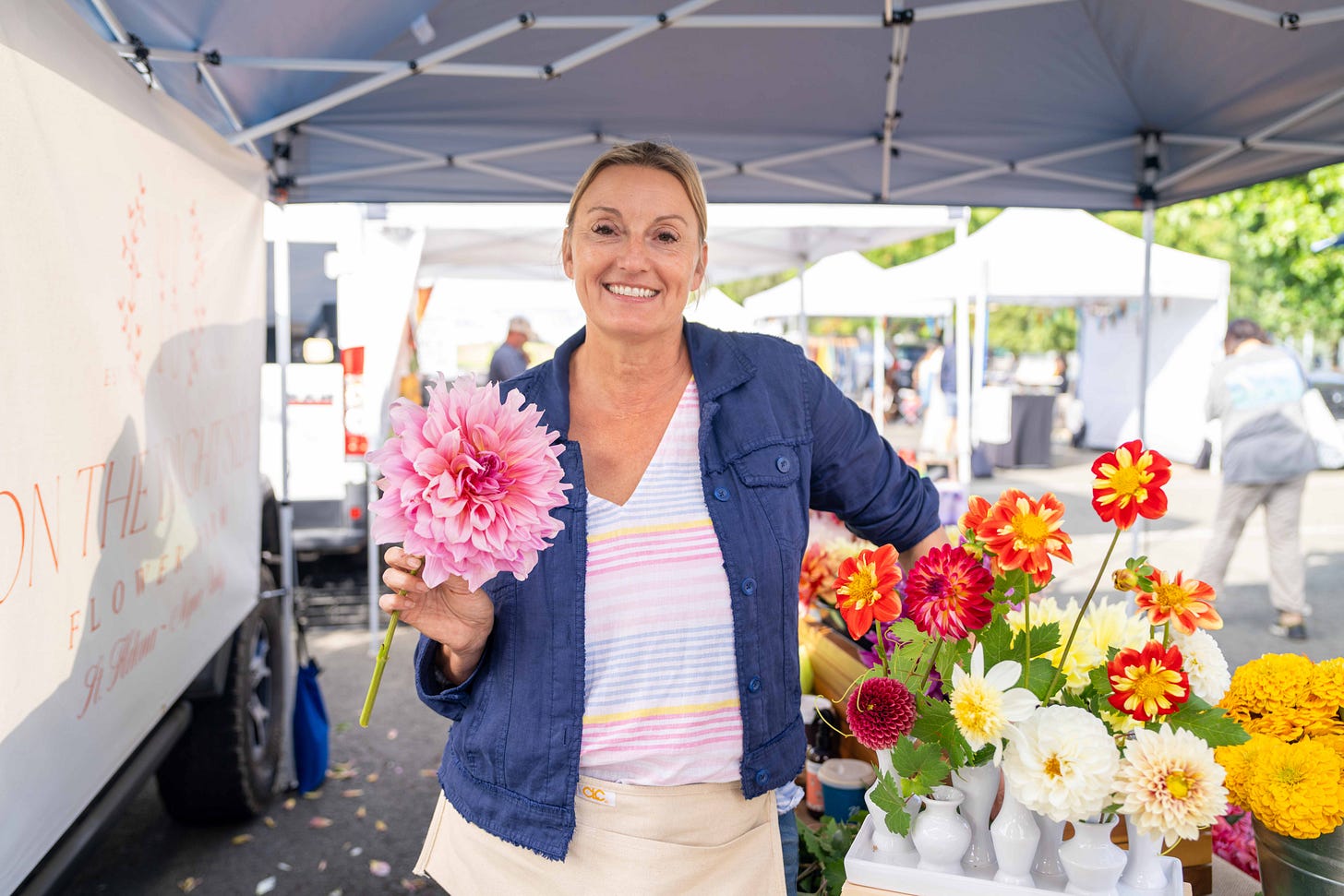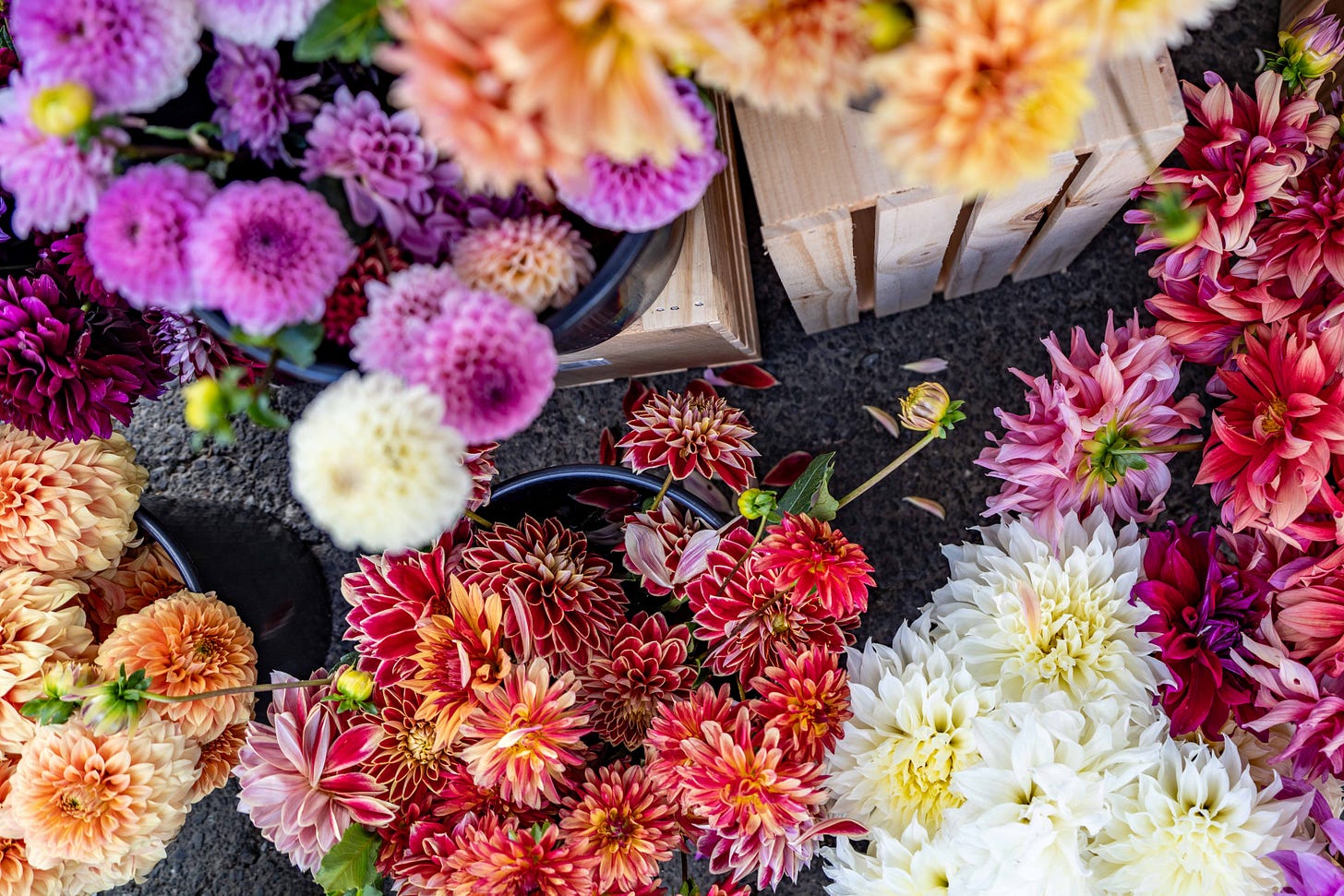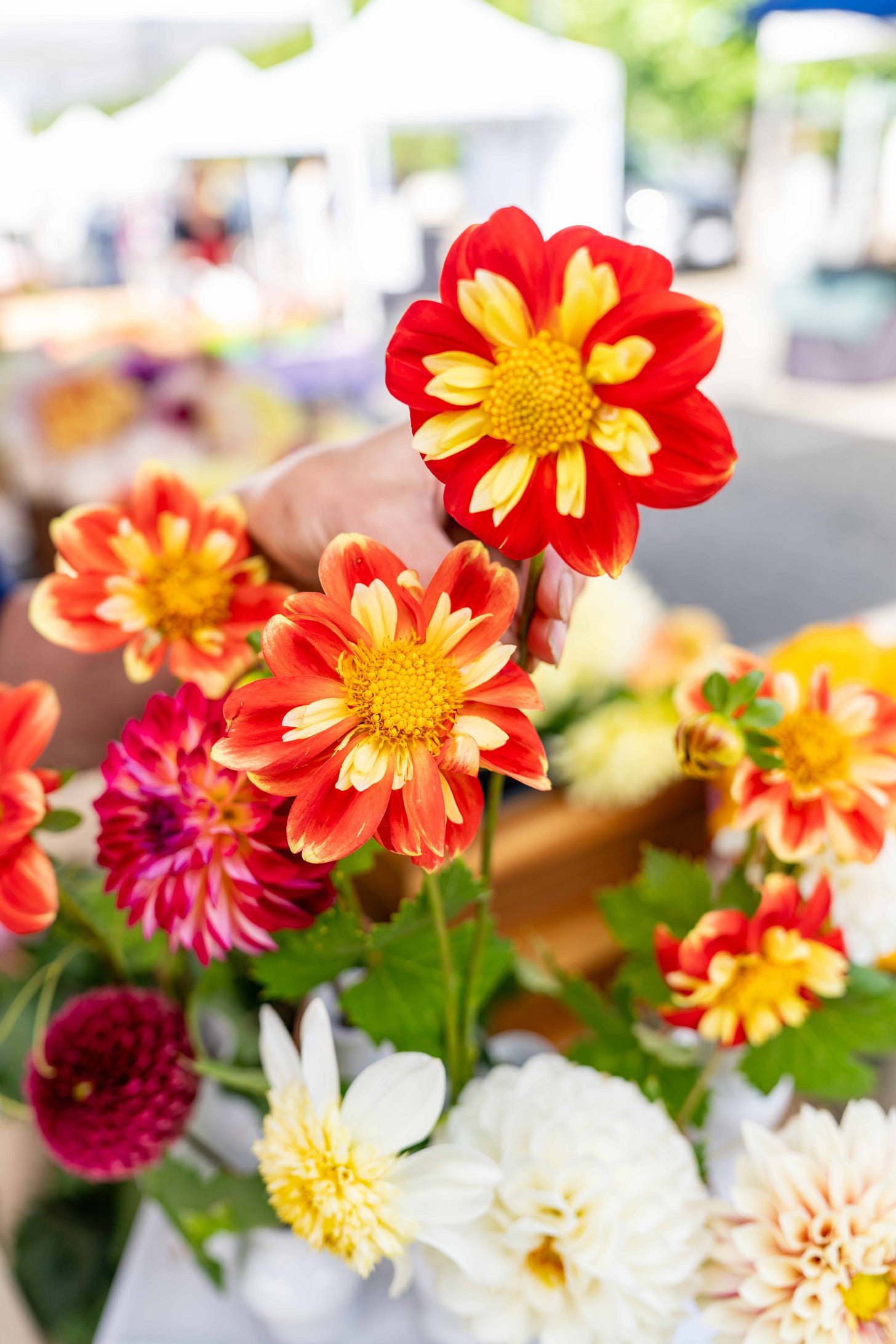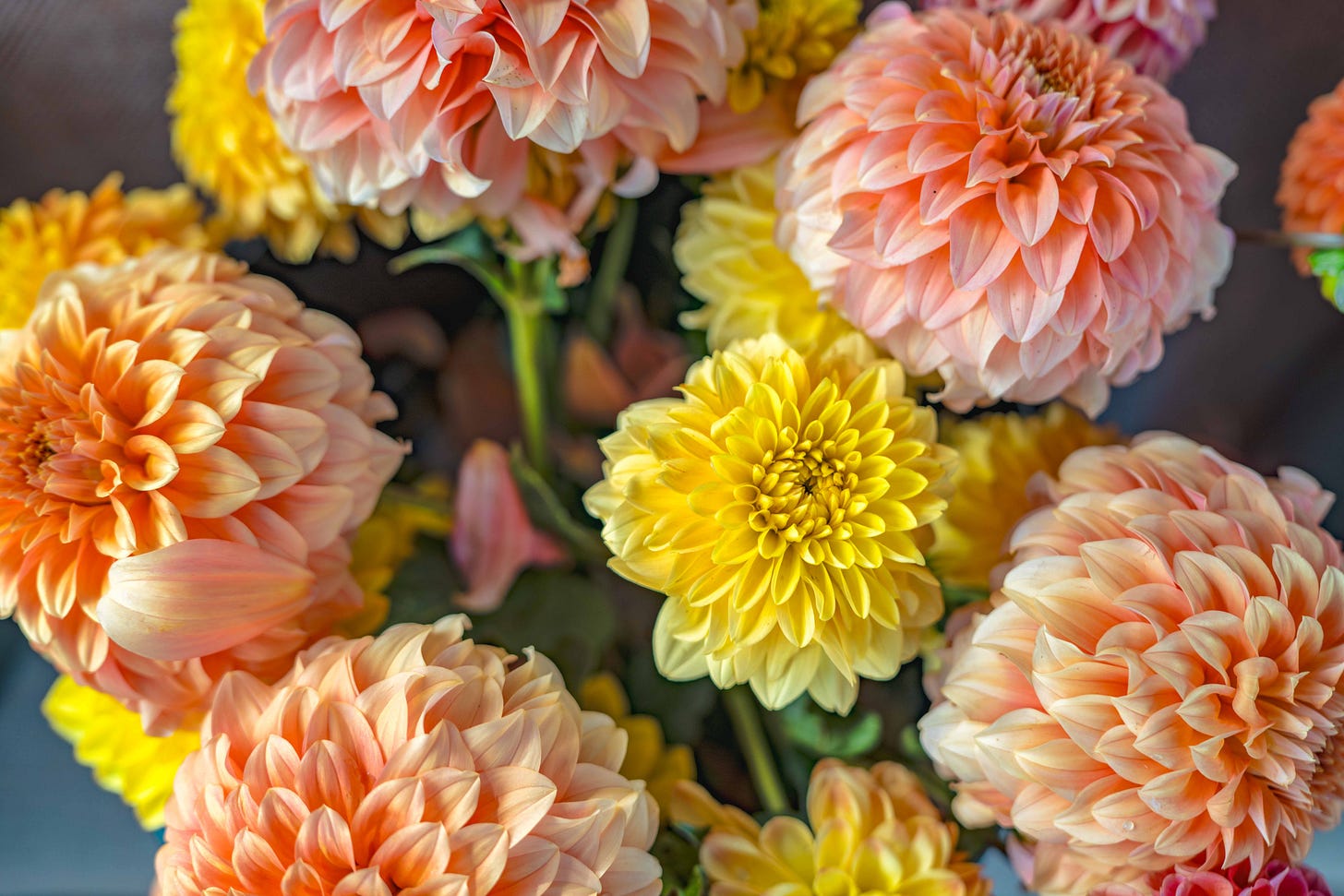ST. HELENA, Calif. — In the aftermath of disasters, narratives of tragedy often overshadow accounts of resilience and revival. For the Rosenbrand family — Jackie, owner of On the Bright Side Flower Farm stand at the St. Helena Farmers’ Market; her husband, Ron, the director of vineyard operations at Spring Mountain Vineyard; and their five adult children — adversity became a catalyst for new beginnings.

Facing fire, finding flowers
In 2020, the Glass Fire wreaked havoc in Napa Valley, consuming 67,484 acres and destroying 1,555 structures, including 308 homes in Napa County. Among the lost residences was the one where the Rosenbrands had lived for more than a decade.
Like many families in the region, the Rosenbrands were prepared when they noticed the ominous red glow of flames approaching on Sept. 27, 2020. They packed their car with essentials and readied their pets for quick escape.
"We were ready when the call came to evacuate, but losing everything is an entirely different story," Jackie said.
When the flames had subsided the family hiked to where their home had stood. Everything was gone, incinerated by the blistering heat. But in the days that followed the Rosenbrand family, along with the community, gathered themselves to support one another and begin the slow process of rebuilding their lives.
Fortunately Ron’s family had a small ranch on the valley floor that would eventually provide them a new home and a plot of fertile land.

A dental hygienist for more than 30 years, Jackie had never planted dahlias before. One day, while at the hardware store to resupply their new home, she became intrigued by the plant's colorful, symmetrical blooms.
“They were just striking, and they were also on sale and so I thought, 'OK, $35 for four plants; let's give it a try,'" she said. "And my husband, who grew up on this land, assured me they would flourish. He understands this soil.”
Jackie moved to the valley in 1989 after growing up in Loma Linda in Southern California. Ron grew up in the area. His father, Theo Rosenbrand, moved from the Netherlands in 1954 to eventually work at Beaulieu Vineyards as a cellar laborer. Under the mentorship of renowned vintner Andre Tchelistcheff for more than 20 years, Theo advanced to become BV’s winemaker in the early 1970s, gaining acclaim for continuing the legacy of such wines as the Georges de Latour Private Reserve Cabernet Sauvignon.
Ron was always more interested in agriculture than winemaking, and to make extra cash while he was in high school he grew basil and other herbs to sell to local restaurants and markets such as Keller’s Market. After earning a viticultural degree from UC Davis in 1981, he worked initially at Charles Krug and has been at Spring Mountain Vineyard since 2003. Beyond his primary job, Ron helps Jackie at their flower stand.
In the first year Jackie planted just four dahlia plants to beautify the yard. Yet even this modest number yielded a surplus of blooms, prompting her to share them with neighbors, friends and family. Subsequently she planted more and began to field inquiries from admirers interested in purchasing an expanding array of types — from small, delicate flowerets to enormous 18-inch-in-diameter blooms reminiscent of illustrations from Ernst Haeckel.

Dahlias as symbols of resilience and adaptability
Dahlias are native to the mountainous regions of Mexico and Central America and were cultivated as early as the Aztec era. The Indigenous peoples used the tubers as a food crop, but it was the striking flowers that caught the eyes of European explorers. In the late 18th century dahlias were brought to Europe.
The plant was named "dahlia" for the Swedish botanist Anders Dahl, a student of Carl Linnaeus. Linnaeus was an 18th-century Swedish botanist, physician and zoologist who is best known for developing a system for classifying plants and animals that laid the foundation for modern taxonomy. His binomial nomenclature system gave each species a two-part Latin name, making it easier for scientists to communicate about different species across languages and disciplines. Linnaeus' work, including his most famous book, "Systema Naturae," has had a profound impact on biological sciences, helping to standardize the naming and categorization of organisms.
Dahlias fall within the Asteraceae family and offer an incredible array of forms and colors. The genus “Dahlia” has more than 40 recognized species as well as many dozens of hybrids and cultivars. The Asteraceae family, commonly known as the sunflower or composite family, is one of the largest families of flowering plants, comprising over 23,000 species across 1,620 genera. This family includes a wide variety of plants, from weeds to ornamental flowers.
Most living species, including humans, have two sets of each chromosome (diploid). However, most dahlias are octoploids with eight complete sets of each chromosome, resulting in far greater variability in the offspring. Dahlias also contain many transposons, “jumping genes” that move from place to place in the DNA sequence, which also adds to their diversity. This characteristic is a key reason behind the plant's highly variable appearance — blooms range from daisylike to almost spherical, and their color spectrum includes every shade except blue.
The American Dahlia Society recognizes 15 different broad groups of dahlias, including single-flowered, anemone-flowered and the spectacularly large “dinnerplate” dahlias. Each group is known for specific attributes, such as petal arrangement, size and bloom configuration.

In the language of flowers, the dahlia stands for several attributes, including dignity, elegance and a lasting bond. The dahlia is also the national flower of Mexico, reflecting its rich history in the region. Its cultural significance extends to events and festivals — the Annual Dahlia Festival at Van Winden’s Garden Center every August in Napa, for example.
In Japan, dahlias are celebrated in art and literature, symbolizing grace under pressure or in challenging conditions. The sheer variety of dahlias has made them an irresistible subject for artists and photographers looking to capture their intricate forms and vivid colors.
Dahlias have more to offer than just visual appeal, however. Their tubers are rich in inulin, a type of carbohydrate that some researchers suggest is beneficial for gut health, blood-sugar control and appetite management. But it's the ornamental use that makes the dahlia a cornerstone in horticulture.
Today's dahlia industry is a thriving global enterprise. The flowers are a mainstay in nurseries and garden centers, popular not only for their striking appearance but also for their relative ease of care. They attract pollinators, making them an excellent choice for environmentally responsible gardening.
Although dahlias have been embraced worldwide, they face threats from habitat loss in their native regions. Consequently, conservation efforts are underway to protect these original varieties, given their genetic importance to cultivated forms.
Climate change also poses a challenge to dahlia cultivation. These plants, sensitive to extreme weather conditions, are seen as a bellwether for environmental shifts. Their changing growing seasons and susceptibility to new pests have been the focus of research, aimed at both understanding and mitigating the impacts of a warming planet on horticulture.
A new chapter
The dahlia is a symbol of beauty, resilience and adaptability that provides a potent reminder for the Rosenbrands’ journey.
"Bright Side represents a new chapter and that even something devastating can bring us closer together,” Jackie said, gesturing to the colorful flowers that filled her stand.
When asked about her favorite dahlia, she demurred, comparing it to choosing a favorite child. However, she highlighted a large pink flower called Otto's Thrill, named for Otto Aumuller, a noted dahlia hybridizer who organized the Long Island Dahlia Society during World War II. This dahlia is known for its large, vibrant pink blooms.

"This is one of my favorites," she said, holding out the flower for inspection. "Not just because pink is my favorite color, but also due to its intricate textures and shades — from dark to bright.”
She paused, watching for a while as her husband helped a steady stream of customers assemble colorful bouquets to take home.
"These are not only beautiful flowers but also a way to say thank you to this amazing, supportive, resilient and unbreakable community," she said and then turned her gaze back to the flower.
On the Bright Side Flower Farms’ dahlias and a few other types of flowers such as zinnias and sunflowers can be found on most Friday mornings between May and October at the St. Helena Farmers’ Market, 7:30 a.m. until noon at Crane Park, 360 Crane Ave.
Tim Carl is a Napa Valley-based photojournalist.





Wonderful article.
Excellent story. (I think you should join the UC Master Gardeners of Napa County, Tim.)